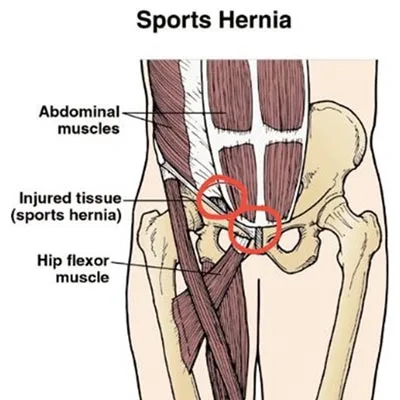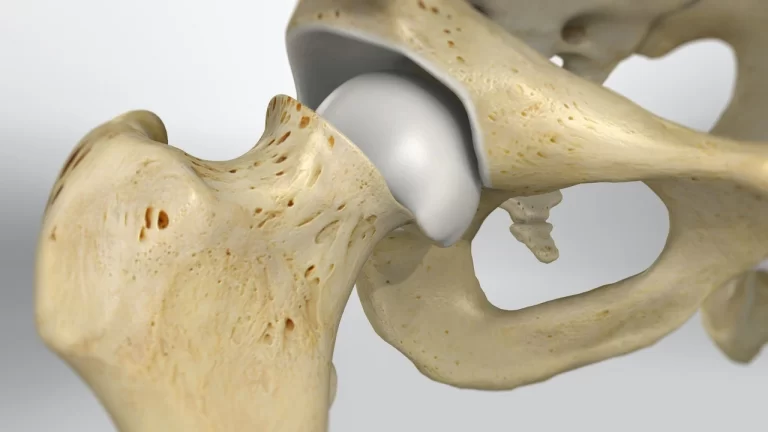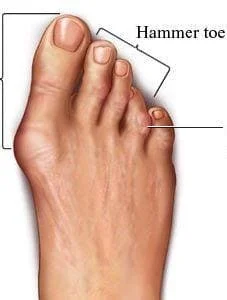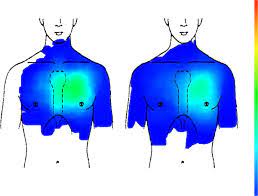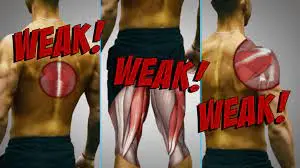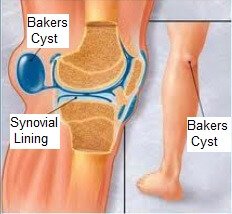Sports Hernia
Table of Contents
What is a sports hernia (athletic pubalgia)?
A sports hernia is an injury (often a tear) to the muscles and/or tendons in your lower abdomen or groin that results in persistent discomfort. It is also referred to as athletic pubalgia, sportsman’s hernia, and Gilmore’s groin. In addition to discomfort and sensitivity in the afflicted region, those with sports hernias might feel nerve irritation from the injury. Because there is no physical hernia present, the term “sports hernia” is deceptive. Those in the medical field prefer to refer to it as “athletic pubalgia.”
You don’t have to be playing a sport to get a sports hernia, but those who do are more likely to experience it if their sport involves sharp turns or quick direction changes.
A sports hernia is not a hernia despite its name. Athletic pubalgia is the actual term for the ailment. Despite having comparable symptoms, sports hernias are not caused by a separation of the abdominal muscles or the protrusion of the intestine or other soft tissue, but rather by torn tendons that attach to the pelvis.
A sports hernia is a soft tissue injury that hurts and develops in the groin region. It most frequently happens when playing sports that call for quick direction shifts or quick twisting motions.
Soft tissue damage in the groin region is called a sports hernia. To avoid problems and ensure a rapid return to athletics, it needs careful treatment.
An ailment that affects athletes who participate in high-intensity sports is a sports hernia. It typically happens while engaging in demanding tasks that require twisting, swift direction changes, and fast, violent motions.
Even while sports hernias are normally not dangerous, being treated can help you avoid long-term consequences and persistent discomfort.
Anatomy and physiology of sports Hernia
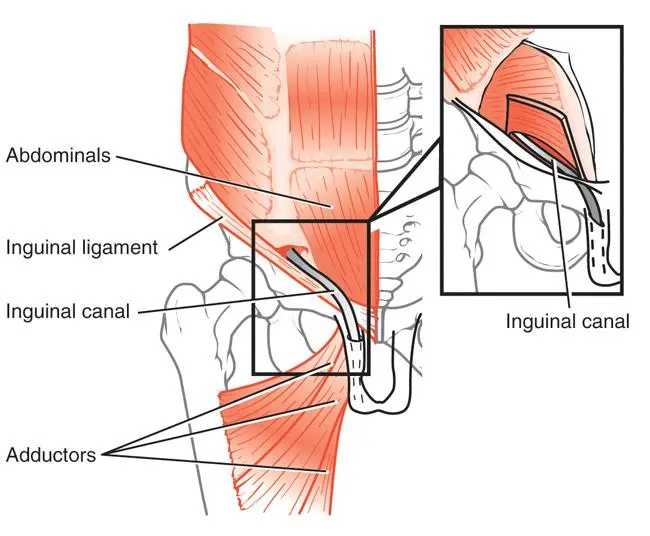
The oblique muscles in the lower abdomen are the soft tissues that are most commonly impacted by sports hernia. The tendons that connect the oblique muscles to the pubic bone are very weak. The tendons (adductors) that connect the thigh muscles to the pubic bone are frequently strained or damaged in sports hernia situations.
Sports hernias can affect a variety of tissues in the lower abdomen and upper thigh, including muscles, tendons, nerves, and ligaments associated with the lower abdominal muscles, the adductor muscles, or both. The ilioinguinal nerve and/or the iliohypogastric nerve, among other places, maybe the source of nerve pain.
Because any number of muscles in the pelvic region might be affected, there are several distinct types of core muscle injuries. The most frequent pattern of damage includes discomfort over the adductor tendon where it joins the adductor (upper thigh) muscle and attritional tears at the place where the rectus abdominis muscle meets the pubis.
Sports hernias: How often are they?
Each year, sports hernias occur in 5% of adult athletes. The prevalence of sports hernias is higher among athletes who engage in repetitive, powerful twisting and turning motions during competition.
Who are those who suffer from sports hernias?
The likelihood of developing a sports hernia is highest in athletes who participate in activities that require quick, powerful movements, particularly twisting of the pelvis. It occurs far more frequently in guys than in girls. Sports hernias most frequently occur in athletes between the ages of 26 and 28. They are uncommon in elderly individuals and youngsters. A sports hernia can happen to anybody, although it is more prevalent in athletes. It can happen to your lower abdomen or groin.
Sports Hernia Causes
Sports including football, hockey, soccer, rugby, skiing, jogging, and hurdling that require twisting of the pelvis are particularly prone to causing sports hernias due to their repeated or explosive nature. Most often ripped or damaged are the soft tissues in the lower abdomen and pubic region that control these motions. Particularly weak points are the tendons that connect the oblique muscles to the pubic bone. The tendons that connect the thigh muscles to the pelvic bone (adductor tendons) are either strained or ripped in the case of many sports hernias.
Athletic pubalgia, often known as sports hernia, is most commonly brought on by rapid, forceful foot planting and/or extreme body twisting, generally when playing sports. Sports plays that can result in sports hernia include shooting a hockey puck, lacrosse ball receiving, or kicking a soccer ball.
Soft tissue tears in the lower abdomen or groin can result from sports exercises that require planting the feet and twisting vigorously.
Sports hernias are more common in contact sports like ice hockey, football, soccer, and wrestling.
Sports hernias commonly occur in more physically demanding activities including ice hockey, football, wrestling, and soccer. When your feet are placed while playing these activities, your pelvis will rotate. Your groin or lower abdomen’s soft tissue may rip as a result of this.
When the deep layers of your lower abdominal wall or the tendons that connect your muscles to your pelvis weaken or rip, a sports hernia (also known as athletic pubalgia) develops.
Other Causes
A sports hernia may be brought on by or contribute to the following circumstances:
- Hip motions that are forceful and repeated, such as twisting, kicking, leaping, and cutting or slicing.
- Vigorous hip and abdominal workouts that are hazardous.
- Weakness in the abdominal muscles and improper athletic preparation.
- An unequal distribution of abdominal and hip muscular strength.
Injuries to the core muscles can also result from the following circumstances:
- Hip motions that you keep repeating with force. Jumping, kicking, and twisting are examples of this.
- Exercises for the hips and abdomen that are risky and aggressive
- Sluggish abdominal muscles
- Improper athletic conditioning
- A disparity in muscular strength between your hip and abdominal muscles
Your muscles might become injured by this motion. Your most commonly is affected by it
- Muscles in your lower abdomen that are oblique
- Adductor tendons, which connect your thigh muscles to your pubic bone
- Oblique muscles’ tendon connections to the pubic bone
- Young guys who participate in athletics frequently get sports hernias. Sports hernias can occur in women as well, albeit considerably less commonly.
Sports hernia injuries can occur for a variety of reasons
- Sports hernias are more common in athletes who participate in high-intensity running, leaping, cutting/slicing, or twisting motions. For instance, rugby, football, wrestling, and ice hockey.
- Compared to the general athlete population, professional athletes and/or those athletes who compete at the highest levels of their sport, like Division I collegiate athletes or players in the best traveling high-school leagues, are far more likely to develop sports hernias.
- Patients with sports hernias tend to be men. Women athletes who have the disease are uncommon.
- According to some experts, having core muscles that are much weaker than upper thigh muscles increases the chance of developing a sports hernia because it increases the torque that might harm the torso during abrupt movements or pauses.
- Sports hernias might have unclear causes or develop gradually over time as opposed to being brought on by a single traumatic occurrence.
Which activities are at risk in Sports hernias?
Sports involving powerful, repetitive actions, particularly those that entail twisting the pelvis, can harm or rupture the soft tissue in the lower abdomen or groin (a sports hernia). The following sports have the highest risk of developing a sports hernia:
- Ice hockey,
- Football
- Soccer
- Wrestling.
- Hurdling
- Rugby
- Skiing
- Tennis and more.
Sign And Symptoms
At the moment of the incident, a sports hernia typically causes excruciating pain in the groin region. Usually, resting relieves the discomfort, but returning to sports activities especially those involving twisting motions brings it back.
As opposed to the more typical inguinal hernia, a sports hernia does not result in a noticeable groin bulge. A sports hernia may develop into an inguinal hernia over time when the abdominal organs press on the weaker soft tissues, resulting in a noticeable bulge.
Without treatment, this injury may lead to persistent, incapacitating pain that keeps you from returning to your previous level of athletic activity.
Other Symptoms
A sports hernia’s primary symptom is persistent (chronic) pain in your lower abdomen or groin. The descriptions and scenarios of the discomfort that are more precisely related to a sports hernia are as follows:
- At the time of the damage, you feel abrupt, severe agony.
- Continuous (chronic) pain that has a dull or burning sensation.
- It’s challenging to localize the pain’s specific location in the lower abdomen and groin.
- Your inner thigh and/or scrotum are affected by the ache.
- while you push yourself, especially while running, twisting, kicking, or sitting up, you experience discomfort.
- When you sneeze or cough, your groin hurts.
- Due to the discomfort, you must cease playing your sport or drastically reduce your physical activity.
- Even though the discomfort may go away once you’ve rested, sporting activities cause it to return.
- intense agony at the time of the injury
- Having trouble locating the precise location of the discomfort, especially while twisting, kicking, running, or sitting up
- When you cough or sneeze, your groin hurts
- With rest, the pain subsides, but once you begin athletic activities, it returns.
- At the time of the incident, there was sudden, excruciating groin agony.
- groin soreness that subsides with rest but flares up when participating in sports
- Rather than on both sides, groin discomfort is more frequently felt on one side only (unilaterally).
- only when twisting motions cause pain
- Pain brought on by other activities using the deep abdominal muscles, such as coughing or doing half-sit-ups
- Bruising or tenderness in the lower abdomen or upper thigh
- The inability to participate in sports because of groin pain that gradually transforms from intermittent to consistent
- Some players may still have sports hernias even if the sole sign is prolonged groin discomfort or decreased athletic performance due to the injury’s sometimes nebulous nature.
Diagnosis And Tests
A healthcare professional may employ a variety of diagnostic procedures to pinpoint a sports hernia, but they will first look at the mechanism of damage. The next step is a physical examination by the doctor. Finding the injury’s mechanism is crucial since certain actions, including those involving the pelvis, greatly increase the risk of sports hernias. To rule out a genuine hernia, which can also be brought on by exercise, a physical examination is required. The physical examination consists of visual inspection, palpation (feeling the injury with the hands), and tests of motor strength and range of motion.
The healthcare professional may also request an X-ray, ultrasound, CT, or MRI to check for damage to the bone, nerves, and soft tissue if a sports hernia diagnosis or the severity of the injury is unclear. The best imaging method for detecting injuries in soft tissue, including tendons, ligaments, and muscles, is an MRI. Because lower abdomen and groin injuries sometimes produce pain in various or referred areas, imaging diagnoses are particularly crucial.
Doctor Examination
Your doctor will ask you about your symptoms and the circumstances surrounding the injury during your initial visit.
When performing a physical examination, your doctor may detect soreness in the groin or above the pubis if you have a sports hernia. Despite the possibility that a sports hernia is connected to a classic inguinal hernia, a physical examination by the doctor typically reveals no hernia.
A sports hernia is normally diagnosed by a doctor in three steps, as follows:
Patient history
Finding the precise mechanism of injury—whether it was brought on by a single incident or the result of several weeks, months, or years of overuse while participating in sports is crucial for making a sports hernia diagnosis. As a result, the doctor will probably spend a lot of time asking the athlete about their most recent athletic performance, when the pain and/or discomfort initially started, if it became worse abruptly or gradually, and other details. For instance, a hockey player could have experienced abrupt, incapacitating agony right away following a successful slap shot during a game.
Physical exam
The doctor will examine the legs, pubic region, and lower abdomen carefully. First, when the patient is seated or lying down, the doctor will palpate (touch) these locations and visually examine them, looking for pain and other indications of tissue damage.
The patient may participate in one or more activities, such as standard and oblique sit-ups, during the second part of the physical examination. Additionally, the patient can be instructed to perform one or more thigh-contraction exercises. These exercises can aid the doctor in locating the area that hurts when they exert themselves, assessing a range of motion, and determining which tissue(s) and where they are damaged.
It is highly recommended that the MRI be ordered by a groin injury expert and examined by a radiologist who regularly evaluates pictures of groin injuries and employs particular methods to detect lesions in the groin/abdominal wall. To confirm the diagnosis or rule out other potential ailments, X-ray, ultrasound, or CT (computerized tomography) scans may also be utilized.
A sports hernia treatment program can be implemented once the proper diagnosis has been obtained.
Diagnostic imaging
To support the clinical diagnosis and/or to pinpoint the precise site(s) of tissue damage, a clinician may order one or more diagnostic imaging studies. The most frequent test to diagnose sports hernia is magnetic resonance imaging (MRI).
Physical Tests
Your doctor may probably ask you to perform a sit-up or flex your trunk (torso) against resistance in order to evaluate whether you have a sports hernia. It will hurt throughout these exams if you have a sports hernia.
Imaging Tests
To assist in identifying if you have a sports hernia, your doctor may request X-rays or magnetic resonance imaging (MRI) scans after doing a thorough examination.
To rule out other potential reasons for the discomfort, bone scans or other testing are occasionally advised.
How is an athletic pubalgia (sports hernia) diagnosed?
Sports hernias can be challenging to diagnose since a variety of illnesses and injuries, including hip-joint osteoarthrosis, rectal or testicular discomfort, or a pelvic fracture, can induce groin pain. Additionally, injuries that start in other regions of your body, such as your leg, can cause discomfort in your groin area. Referred pain is the term for this. You have a lot of nerves that branch out from your groin area and cause this to happen.
Your doctor will thoroughly review your symptoms, medical history, and physical exam in order to determine whether you have a sports hernia. Additionally, they could put you through imaging tests to see whether you have sports pubalgia or to rule out any other probable ailments.
Which exams are performed to identify a sports hernia?
In order to determine whether you could have a sports hernia, your healthcare professional will interview you about your symptoms and medical background. Then they will examine you physically to determine the extent of your discomfort and injuries. They’ll probably ask you to flex your abdomen against resistance and/or perform a sit-up. It will hurt if you perform these workouts if you have a sports hernia.
Your healthcare practitioner may suggest that you undertake imaging testing since a sports hernia is a wide ailment and you might have other conditions that are causing your groin discomfort. These may consist of:
- MRI.
- X-ray.
- Ultrasound.
- CT scan
- a bone scan.
Your healthcare professional will be able to tell if you have an athletic pubalgia (sports hernia) or anything else with the use of these imaging techniques.
Sports Hernia Treatments
Your doctor will decide on the best course of action for treating your sports hernia depending on a number of variables, including your age, general health, the kind and degree of the tears, and the level of physical activity you would like to resume. A sports hernia requires interdisciplinary management, with nonsurgical therapy being advised as the initial step.
The main objectives of sports hernia rehabilitation and therapy are pain relief, range of motion restoration, strength restoration, return to function, and return to sports and activities. The severity of the injury, your age, your health, and the degree of activity you intend to resume all affect the treatment strategies for sports hernias. Sports hernias can be treated surgically or non-surgically. Your doctor will probably recommend non-surgical therapy for your sports hernia first to rule out other non-surgical options before recommending surgery if necessary.
Nonsurgical treatment
Sports hernia nonsurgical treatment advocates frequently suggest the following four steps for patient care:
Rest. In order to allow the damaged tissue(s) time to recover naturally, athletes must take a 4–6 week hiatus from their normal sports and any other rigorous activity.
Medicines that Reduce inflammation. To aid with pain relief and reduced inflammation of damaged tissues, patients may use anti-inflammatory pain drugs including ibuprofen (Motrin, Advil), naproxen (Aleve), or naproxen citrate. Oral steroids may be used in various circumstances.
Physical treatment. After the initial period of rest, the patient engages in a physical therapy program that emphasizes abdominal muscle building as well as lower abdominal muscular stretching and leg muscle strengthening. Dry-needling, therapeutic massage, and ultrasound therapy are possible further therapies.
Injections of Corticosteroids. Sports hernia can be treated with a variety of injections, including steroid injections, nerve blocks to the ilioinguinal and iliohypogastric nerves, and platelet-rich plasma (PRP) injections. To relieve pain, any of these approaches can be employed. CSteroids, sometimes referred to as corticosteroids, are a class of anti-inflammatory drugs. If conventional anti-inflammatory drugs do not relieve your symptoms, your doctor could suggest a cortisone injection.
Surgical Treatment
Surgery may be necessary for patients with severe tendons that need to be repaired. For this procedure, many general surgeons and hernia specialists will contact an orthopedic surgeon.
Sports hernia repair can be performed as a typical, open surgery with one lengthy incision or as a less invasive endoscopic treatment, similar to the surgical options for real hernias. A tube-shaped camera called an endoscope is used by the surgeon during an endoscopy to examine the belly through a series of tiny incisions. In order to repair entirely ruptured ligaments, the surgeon either sutures fully ripped soft tissue or employs a mix of drill holes, anchors, sutures, skin adhesive, and synthetic mesh.
In order to reduce the patient’s pain, the surgeon may also sever the tiny inguinal nerve in the groin if it has been damaged or scarred as a result of years of physical activity. Inguinal neurectomy is the medical term for this treatment.
operative process. Surgery options for treating injured groin tissues include:
- a customary, open operation involving a single, lengthy incision.
- endoscopic techniques. In an endoscopy, the surgeon uses a tiny camera known as an endoscope to view the inside of the belly through smaller skin incisions.
- Traditional and endoscopic techniques yield the same outcomes.
In order to reduce the patient’s suffering, certain sports hernia situations necessitate severing the inguinal nerve during surgery. Inguinal neurectomy is the medical term for this treatment.
The surgical treatment that best suits your needs will be discussed with you by your doctor.
Surgical rehabilitation.
To assist you in regaining strength and stamina, your doctor will create a rehabilitation plan. Six to twelve weeks following surgery, the majority of athletes may resume their sports.
Surgical outcomes.
More than 90% of patients who have nonsurgical therapy first, followed by surgery, are able to resume their sport. Some patients’ tissues will rip again with physical activity, necessitating another surgical repair. More than 90% of patients who have nonsurgical therapy first, followed by surgery, are able to resume their sport. Some patients’ tissues will rip again with physical activity, necessitating another surgical repair.
Additional surgery.
After surgery, discomfort in the inner thigh might persist in certain sports hernia patients. For this discomfort, your surgeon could suggest a different procedure called an adductor tenotomy. The tendon connecting the inner thigh muscles to the pubis is severed during this treatment. A longer tendon will repair, reducing stress and enhancing the patient’s range of motion.
Your abdominal wall is strengthened after surgery for a sports hernia. Laparoscopic surgery or open surgery can both be used to perform this. A tiny camera is introduced via one of the small wounds created during laparoscopic surgery. This enables your surgeon to view your body as it operates.
An inguinal neurectomy is a treatment that can be used to treat certain people’s discomfort. The inguinal nerve, a little nerve in your groin, will be severed by the surgeon.
After surgery, some patients could continue to experience pain. The adductor tenotomy procedure may then be advised by your doctor. The tendon that connects your inner thigh muscles to your pubic bone will be severed by the surgeon. Your tendon’s tension is released, and you have a wider range of motion as a result.
What kind of physical treatment do sports hernias require?
The main objective of physical therapy for sports hernia management is to increase hip and abdominal muscular strength and flexibility without exacerbating the injury or discomfort. The physical therapy program you get will be specially designed by your medical team to be as appropriate to your sport and injury as possible.
For sports hernias, typical physical rehabilitation techniques include:
- Core workouts.
- Stretching.
- Swimming.
- Yoga
- posture constancy.
- medicinal balls are used.
- resistance band use.
Rehabilitation
Following surgery or a prolonged absence from exercise, a doctor will collaborate with the patient to create a rehabilitation program. For patients recovering from a sports hernia, a rehabilitation program normally entails alleviating discomfort, enhancing strength, regaining range of motion, and obtaining enough rest. A person might subsequently begin to focus on recovering cardiovascular fitness.
Strength training may influence how quickly a person can resume normal sports activities, per a 2019 research. The results demonstrated that compared to a non-specific rehabilitation strategy, balance, and core-strengthening activities aided athletes in returning to full activity levels more quickly. However, there weren’t too many participants in the research.
Exercises
Over the course of the 8-week trial, the individuals engaged in some of the following exercises:
- Bridge: To perform this exercise, lie on the floor with your feet hip-width apart and your hands flat on the ground. Then, while gently assuming a bridge posture. A person lifts their pelvis to prevent their knees from moving inward or outward. They can try to maintain the position for a few seconds while performing five sets of ten repetitions (reps).
- Static adduction: While lying on the ground, a person performs this exercise while holding a football or another ball of a comparable size between their feet. After 30 seconds of holding, they squeeze their legs inward into the ball and repeat the motion 10 times.
- Hip rotations: While standing, a person elevates their leg and rotates their hip in a circular motion. They rotate 20 times on each leg in both the clockwise and anticlockwise orientations.
- Bird dog: While on all fours, execute two sets of 15 repetitions of alternating opposing leg and arm extensions.
People can lunge either forward or backward, switching sides as they move. Two sets of 15 forward lunges and 15 reverse lunges might be the goal.
Yoga’s Tree Pose is an excellent balance practice that can be performed practically any place. One retains the single-leg stance for at least 30 seconds while standing on one leg with the hands clasped in front of the heart. An individual can be able to maintain the stance for longer as their leg strength and balance develop.
Exercises that exacerbate discomfort should be avoided.
Do sports hernias naturally recover?
It is uncommon for sports hernias to heal on their own since they often require professional treatment in addition to rest. A sports hernia frequently requires the use of corticosteroids, physical therapy, and anti-inflammatory medications. Sometimes surgery is required. A minor muscle strain or other non-sports hernia in the groin may be able to heal on its own.
Can I avoid developing an athletic pubalgia (sports hernia)?
Because of the pressure and strain that some activities exert on the pelvis and hips, sports hernias (also known as athletic pubalgia) can be challenging to prevent. If you play a sport that puts you at high risk for core muscle or tendon injuries, your medical team may advise you to participate in a sports hernia prevention program
What may be in a sports hernia prevention program?
Exercises to strengthen the core and abdomen.
hip-muscle-strengthening exercises.
exercises that increase flexibility and reduce tension in the lower abdominal region, where injuries to the core muscles frequently develop.
Prognosis
How long does a sports hernia recovery take?
A sports hernia (also known as athletic pubalgia) is treated and recovered from according to the nature and degree of the damage. Sports hernia sufferers who undergo physical therapy typically see a substantial improvement in their symptoms six to eight weeks after beginning treatment.
Sports hernia (also known as athletic pubalgia) surgery is thought to be effective in about 90% of cases, whether open or laparoscopic. People with sports hernias may often return to their sport or other activities entirely between six and twelve weeks after undergoing post-surgery physical therapy and rehabilitation.
Once you resume your athletic activity, the afflicted tissue may occasionally rip once more. If this occurs, another surgical repair will probably be required.
Summary
Numerous additional terms for the damage that happens in the lower abdomen or groin area’s soft tissue include sports hernia. The phrase is misleading since a sports hernia is not a specific form of hernia but rather an ailment brought on by strain or overuse that results in weakening in this region.
This injury is more likely to occur in those who play sports like football or hockey that require a lot of running and rapid twisting. Sports hernias are frequently painful, and they need to be treated and rest to recover. A sports hernia can develop into a chronic condition in some people who need surgery. Sports hernia risk may be lowered by engaging in core strengthening activities.
FAQs
Sport Hernia (Athletic Pubalgia) Sports hernias are groin-area soft tissue injuries that are excruciatingly painful. Sports that call for swift direction changes or quick twisting motions are the ones where it happens the most frequently.
The majority of the time, it happens during demanding tasks that include twisting, swift direction changes, and sudden, violent motions. Getting treatment helps avoid persistent discomfort and long-term problems, even though sports hernias are often not serious.
Sports hernia (also known as athletic pubalgia) surgery is thought to be effective in about 90% of cases, whether open or laparoscopic. People with sports hernias may often return to their sport or other activities entirely between six and twelve weeks after undergoing post-surgery physical therapy and rehabilitation.
Sports hernia signs and symptoms include:
severe agony just after you were hurt.
Pain, especially while kicking, twisting, moving quickly, or standing.
When you cough or sneeze, your groin hurts.
With rest, the pain subsides, but once you begin athletic activities, the pain returns.
Sports include football, hockey, soccer, rugby, skiing, jogging, and hurdling. It requires twisting of the pelvis and is particularly prone to causing sports hernias due to their repeated or explosive nature. Most often ripped or damaged are the soft tissues in the lower abdomen and pubic region that control these motions.
A groin strain and a sports hernia are two conditions that are frequently misunderstood. In contrast to a sports hernia, which may require surgery, a strain often heals on its own in two to six weeks. The absence of a visible hernia bulge distinguishes a sports hernia from a traditional inguinal hernia.

